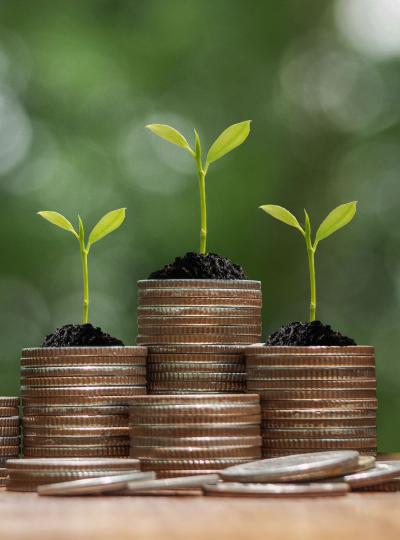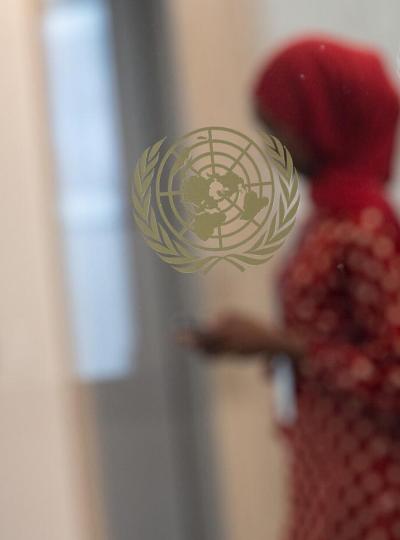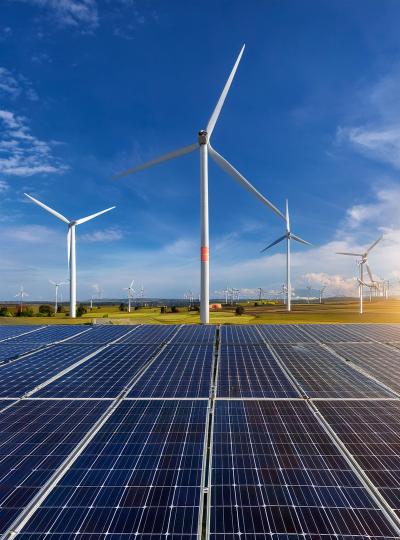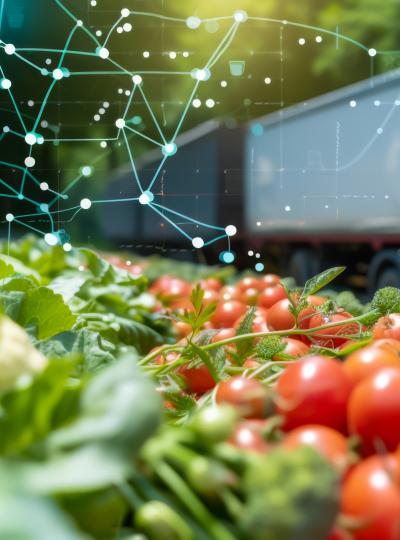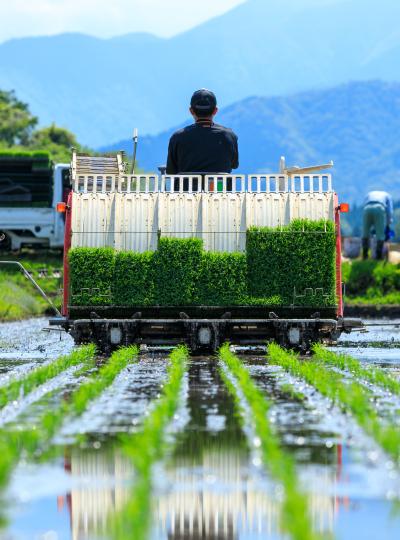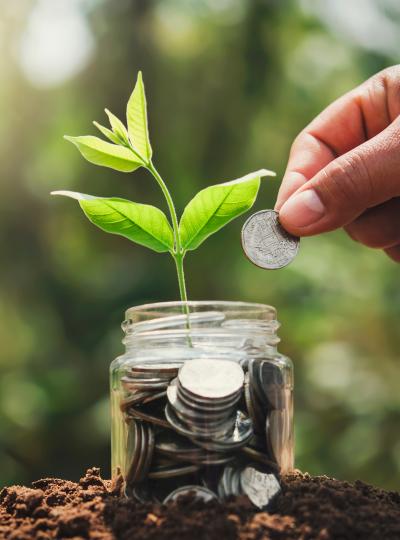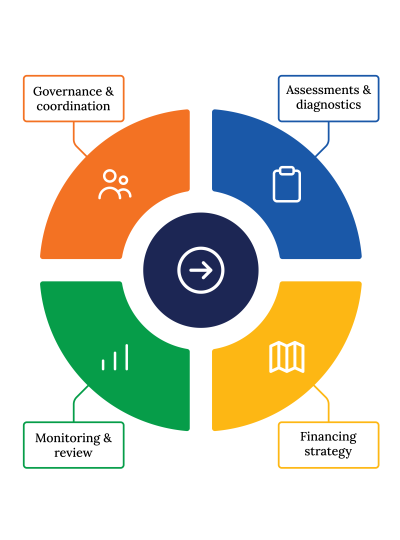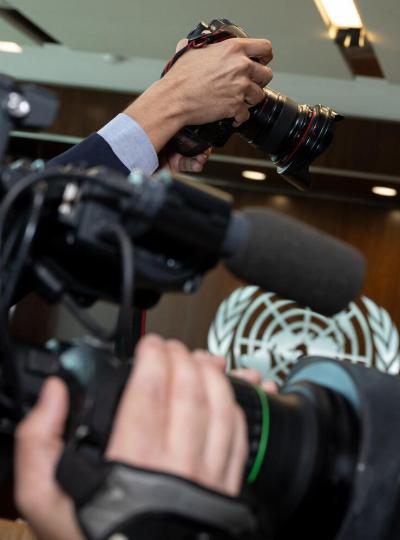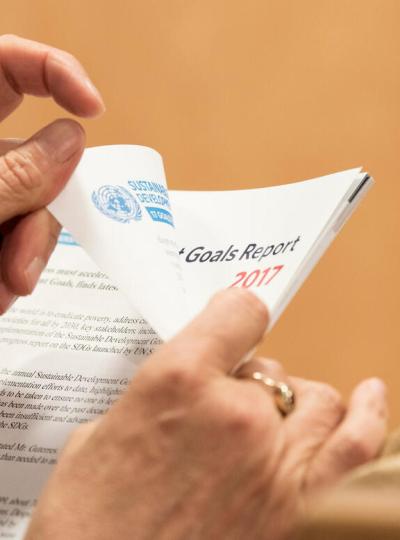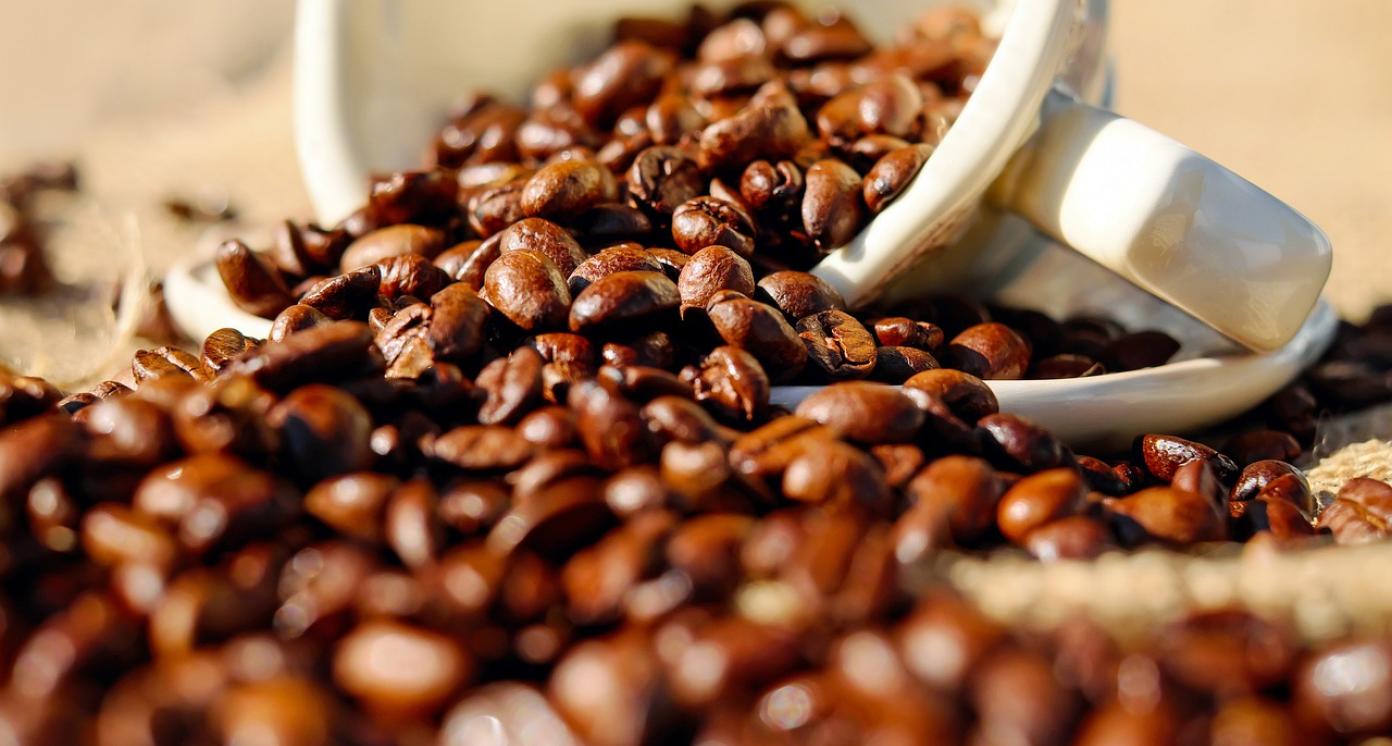Premium Coffee Production
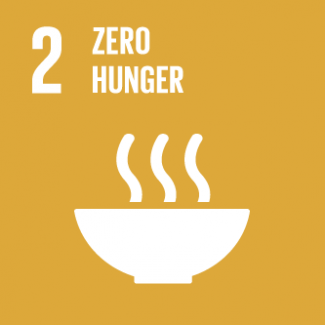
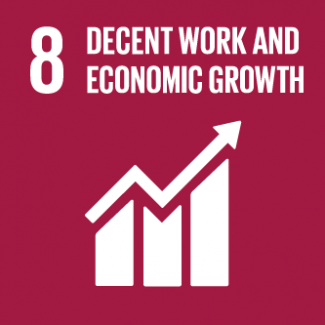
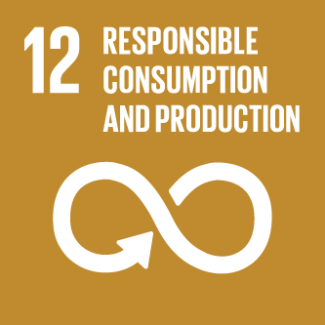
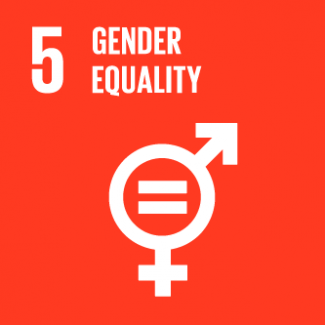
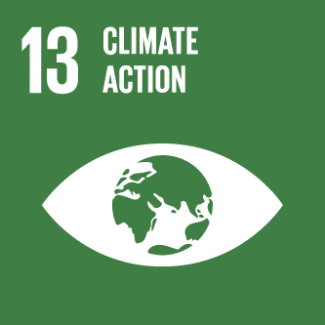
Business Model Description
Invest in recuperation of plantations of high-quality Arabica coffee variety and installing modern and sustainable processing facilities. Investments are also to be made in the modernization of cultivation techniques and processes, training of communities and women producers is therefore necessary. Entering the premium coffee international niche will involve strong investments in effective marketing strategies, namely eco and fair trade / labor certifications associated to premium products.
Expected Impact
Enhance agricultural productivity, support sustainable practices, and contribute towards income equity among smallholder coffee farmers.
How is this information gathered?
Investment opportunities with potential to contribute to sustainable development are based on country-level SDG Investor Maps.
Disclaimer
UNDP, the Private Finance for the SDGs, and their affiliates (collectively “UNDP”) do not seek or solicit investment for programmes, projects, or opportunities described on this site (collectively “Programmes”) or any other Programmes, and nothing on this page should constitute a solicitation for investment. The actors listed on this site are not partners of UNDP, and their inclusion should not be construed as an endorsement or recommendation by UNDP for any relationship or investment.
The descriptions on this page are provided for informational purposes only. Only companies and enterprises that appear under the case study tab have been validated and vetted through UNDP programmes such as the Growth Stage Impact Ventures (GSIV), Business Call to Action (BCtA), or through other UN agencies. Even then, under no circumstances should their appearance on this website be construed as an endorsement for any relationship or investment. UNDP assumes no liability for investment losses directly or indirectly resulting from recommendations made, implied, or inferred by its research. Likewise, UNDP assumes no claim to investment gains directly or indirectly resulting from trading profits, investment management, or advisory fees obtained by following investment recommendations made, implied, or inferred by its research.
Investment involves risk, and all investments should be made with the supervision of a professional investment manager or advisor. The materials on the website are not an offer to sell or a solicitation of an offer to buy any investment, security, or commodity, nor shall any security be offered or sold to any person, in any jurisdiction in which such offer would be unlawful under the securities laws of such jurisdiction.
Country & Regions
- Angola: Uíge
- Angola: Kuanza Sul
- Angola: Kuanza Norte
- Angola: Huíla
Sector Classification
Food and Beverage
Development need
Investing in sustainable agriculture is pivotal for tackling poverty and climate change. It's significantly effective in raising incomes among the poorest, with the World Bank highlighting its power to boost shared prosperity and meet future food security needs (1).
Policy priority
The government is prioritizing family farming, providing access to essential inputs for fundamental products, while also promoting commercial farming to foster innovation and productivity (2).
Gender inequalities and marginalization issues
Nearly 50% of family farm heads are in the 35-45 age range, with a significant representation of women, though they have lower educational levels. This indicates the need for gender-focused development in agricultural employment and education (11). Women have lower quality jobs than similarly-skilled men; 86% of employed women engaged in vulnerable jobs (defined as own-account workers and contributing family workers) compared to 67% of men (25). Given the global patterns in agriculture, it is likely that issues of access, equity, and income affect women, who often make up a large proportion of the agricultural workforce (6).
Investment opportunity introduction
Domestic consumption is growing and neighbouring countries can be a target market for export. Moreover, the country is rich in water sources. In 2022, the country exported beer, juices, and soft drinks for over USD 10 million (3).
Key bottlenecks introduction
Key bottlenecks in the agricultural may include vulnerability to climate change and climate shocks, low productivity and market access (4).
Food and Agriculture
Development need
Historically, Angola was one of the world's largest coffee producers, especially high-quality Arabica beans. However, the industry suffered heavy destruction during the prolonged civil war. With peace restored, there has been a concerted effort to revive this sector (5).
Policy priority
The Angolan government has identified premium coffee as a key area for development. Initiatives to revitalize the coffee sector aim to restore Angola's status as a top coffee exporter (6).
Gender inequalities and marginalization issues
Coffee farming and production have historically been male-dominated. Efforts to include women in all aspects of the coffee value chain are crucial. Programs focused on empowering women in coffee-growing regions can lead to more equitable outcomes and benefit families and communities as a whole (16).
Investment opportunity introduction
Angola's coffee industry is ripe for investment. These efforts aim to rejuvenate Angola's status as a world coffee leader, offering vast opportunities in production, processing, and global distribution, tapping into its rich agricultural heritage (7).
Key bottlenecks introduction
Some bottlenecks for coffee production in Angola include infrastructure development, access to finance, quality control and certifications, and market access and promotion (6).
Agricultural Products
Pipeline Opportunity
Premium Coffee Production
Invest in recuperation of plantations of high-quality Arabica coffee variety and installing modern and sustainable processing facilities. Investments are also to be made in the modernization of cultivation techniques and processes, training of communities and women producers is therefore necessary. Entering the premium coffee international niche will involve strong investments in effective marketing strategies, namely eco and fair trade / labor certifications associated to premium products.
Business Case
Market Size and Environment
USD 100 million - USD 1 billion
5% - 10%
Angola's coffee market revenues amounted to USD 329.6 million in 2024. The revenue at home is expected to grow annually by 6.93% (CAGR 2024-2028) (10).
In the early 1970s, Angola was the third largest producer in the world, with markets in the Netherlands, the United States and Portugal and quotas defined by the International Coffee Organization, based in London and several times supplying quotas from Brazil; it is seen as the most aromatic and essential for the most famous blends (7).
Indicative Return
15% - 20%
According to the EU-UNCTAD joint initiative for Angola, known as Train for Trade II, and their conducted workshops on value chain mapping, MSMEs operating within the coffee value chain sector have the potential to achieve 15-25% gross margin on market conditions (24).
Investment Timeframe
Long Term (10+ years)
The investment timeframe for premium coffee in Angola spans several years due to the nature of coffee land preparation, planting, and the maturation period of coffee plants before they begin producing harvestable crops (11).
Ticket Size
USD 1 million - USD 10 million
Market Risks & Scale Obstacles
Business - Supply Chain Constraints
Market - Volatile
Impact Case
Sustainable Development Need
Multidimensional poverty remains a challenge across the country, particularly in rural areas where over 95% of the population works in the agriculture sector. Angola was among the world's largest producer of coffee in the early 1970s. Some provinces stand out for the favourable climate and soil conditions to grow coffee. Investments in this sector may foster income generation by smallholder farmers by providing a cash crop to complement their activities. If proper technical assistance is provided to the farmers to promote sound forestry management, fair trade and fair labor conditions, Angola may tap into market niches with higher price.
Gender & Marginalisation
Coffee farming and production have historically been male-dominated. Women, despite being significantly involved in every part of the production chain, face disparities in pay, opportunity, ownership, and market access compared to men (16).
Women have lower quality jobs than similarly-skilled men; 86% of employed women engaged in vulnerable jobs (defined as own-account workers and contributing family workers) compared to 67% of men.(25)
Expected Development Outcome
Premium coffee sustainable and fair production and marketing contributes to better job opportunities and the consolidation of sustainable production and consumption practices.
Premium coffee production contributes to poverty reduction and improved overall living conditions for coffee-growing communities.
Sustainable and fair premium coffee production contributes to reduced carbon emissions in the coffee supply chain.
Gender & Marginalisation
Premium coffee sustainable and fair production contributes to women empowerment, as they are highly involved in agriculture in Angola. Moreover, poor households benefit from increased household income given the wider access opportunities to low-skilled agriculture sector jobs.
Primary SDGs addressed

2.4.1 Proportion of agricultural area under productive and sustainable agriculture
For 2020, 10% of the country’s arable land was under cultivation (26).
N/A

8.3.1 Proportion of informal employment in total employment, by sector and sex
Proportion of informal employment in total employment for 2021 was 90% (27).
N/A

12.4.2 (a) Hazardous waste generated per capita; and (b) proportion of hazardous waste treated, by type of treatment
Ongoing activities to collect data on hazardous waste (8).
N/A

15.a.1 (a) Official development assistance on conservation and sustainable use of biodiversity; and (b) revenue generated and finance mobilized from biodiversity-relevant economic instruments
For 2021, the proportion of women with ownership or secure rights over agricultural land in Angola was 64% (23).
N/A
Secondary SDGs addressed

Directly impacted stakeholders
People
Gender inequality and/or marginalization
Planet
Corporates
Indirectly impacted stakeholders
People
Planet
Public sector
Outcome Risks
Over-reliance on coffee: Economic dependence on a single commodity, like coffee, makes the economy vulnerable to price volatility in the global market, potentially leading to economic instability (17).
Water resource pressure: Coffee processing is water-intensive and can strain local water resources, affecting both the ecosystem and the availability of water for local communities (18).
Environmental degradation: Intensive coffee farming can lead to deforestation, loss of biodiversity, and soil erosion if sustainable practices are not followed (18).
Impact Risks
Economic instability: If investments do not yield the expected economic growth or job creation, communities and entire regions can face economic instability. This could lead to increased poverty and reduced access to essential services.
Vulnerability to climate change: Without effective investments in sustainable practices, the coffee sector may become increasingly vulnerable to the impacts of climate change, including temperature changes, unpredictable rainfall patterns, and increased incidence of pests and diseases.
Food security: In countries heavily reliant on agriculture, focusing too much on cash crops like coffee at the expense of food crops can impact food security, especially if the anticipated economic benefits from cash crops do not materialize.
Impact Classification
What
Increased sustainable production and export of premium coffee, enhancing food security and economic growth.
Who
Local farmers, women, marginalized groups, private sector, and public institutions, focusing on rural communities.
Risk
Pursuing an unbalanced approach in developing the coffee market may jeopardize efforts towards economic diversification, compromise water management, and threaten ecological sustainability.
Contribution
Premium coffee production significantly boosts the premium coffee sector by modernizing agricultural practices and facilities, which, in turn, elevates Angola's standing in the global coffee market.
How Much
Premium coffee production aims to substantially increase coffee production quality and quantity, potentially doubling the premium coffee output within in the mid-term and contributing to a increase in national agricultural exports.
Impact Thesis
Enhance agricultural productivity, support sustainable practices, and contribute towards income equity among smallholder coffee farmers.
Enabling Environment
Policy Environment
Agriculture Sector Reform Program (ASRP) seeks to strengthen agricultural policy and business environment towards improved food production, ultimately contributing to economic diversification and improved food security (20).
Strategy for Relaunching Coffee Production: MINAGRIF, through its agencies (INCA and FDCA), intends to revitalize coffee production in existing areas as well as expand into new areas, through the rejuvenating coffee plantations, the application of appropriate cultivation techniques, increasing rural extension services and searching financial solutions to boost domestic producers (31).
Financial Environment
Other incentives: The Angolan government has announced plans to invest heavily in increasing coffee production. With a generous budget allocation of AOA 10 billion (USD 12 million), they aim to produce at least 12,360 tons of coffee by the end of 2024. It aims to create new partnerships, both national and international, to help local farmers and entrepreneurs gain access to technological and agricultural innovations (28).
Regulatory Environment
Decree No. 39-B/92 of August 28, 1992: Approves the organic statute of the National Coffee Institute of Angola, defining a type of organization that is modelled on the conjunctural requirements of the coffee policy of the moment (30).
Marketplace Participants
Private Sector
Fazenda Vissolela, Café Cazengo, Delta, Socamia
Government
Ministério da Agricultura e Florestas (MINAGRIF), Instituto de Desenvolvimento Agrário (IDA), Instituto Nacional do Cafe de Angola (INCA), Fundo de Desenvolvimento do Café de Angola (FDCA).
Multilaterals
United Nations Development Programme (UNDP), World Bank, International Finance Corporation (IFC).
Non-Profit
Business France, French agricultural research and international cooperation organization (CIRAD)
Target Locations
Angola: Uíge
Angola: Kuanza Sul
Angola: Kuanza Norte
Angola: Huíla
References
- (1) Farmers Review Africa (2022). Angola has potential as a future agriculture powerhouse. Source: https://furtherafrica.com/2022/09/15/angola-has-potential-as-a-future-agriculture-powerhouse-world-bank/.
- (2) Government of Angola (2023). Programa de Apoio à Produção, Diversificação das Exportações e Substituição das Importações. Source: https://governo.gov.ao/programa/prodesi.
- (3) General Tax Administration (AGT). 2022. External trade statistics.
- (4) World Economic Forum (2022). Angola's agricultural sector could become Africa's powerhouse. Here's why. Source: https://www.weforum.org/agenda/2022/09/angola-agricultural-sector-powerhouse-of-africa/.
- (5) Chris Burns & Dinamene Cruz (2022). Angola sets its sights on the global coffee market. Source: https://www.euronews.com/2022/04/15/angola-sets-its-sights-on-the-global-coffee-market.
- (6) UNCTAD (2018). Coffee, honey, timber: Angola eyes cleaner, greener economic growth. Source: https://unctad.org/news/coffee-honey-timber-angola-eyes-cleaner-greener-economic-growth.
- (7) Omwani Coffee (2023). Angola Coffee Production and Sourcing Guide. Source: https://www.omwani.com/post/angola-coffee-production-and-sourcing-guide.
- (8) National Waste Agency (2021). Administrative Data.
- (9) Rabo Partnerships B.V. (2023). Boosting the Food & Agribusiness Sector in Angola. Source: https://www.rvo.nl/files/file/2023-08/boosting-the-food-and-agribusiness-sector-in-angola.pdf.
- (10) Statista (2024). Coffee Market: Angola. Source: https://www.statista.com/outlook/cmo/hot-drinks/coffee/angola
- (11) Annelie Coleman (2022). Plans afoot to return Angola coffee production to former glory. Source: https://www.farmersweekly.co.za/agri-news/africa/plans-afoot-to-return-angola-coffee-production-to-former-glory/.
- (12) Bloomberg News (2023). Volatile High-End Coffee Bean Market Can’t Make Up Its Mind. Source: https://www.bnnbloomberg.ca/volatile-high-end-coffee-bean-market-can-t-make-up-its-mind-1.2001143.
- (13) UNCTAD (2020). Angola eyes former coffee glory for more sustainable growth. Source: https://unctad.org/news/angola-eyes-former-coffee-glory-more-sustainable-growth.
- (14) Conservation International (n.d.). Improving labor practices + supply. Source: https://www.sustaincoffee.org/assets/resources/SCC-PocketGuide_Labor_Booklets.pdf.
- (15) Juliana A. Barreto Peixoto, Joana F. Silva, M. Beatriz P. P. Oliveira, Rita C. Alves (2022). Sustainability issues along the coffee chain: From the field to the cup. Source: https://ift.onlinelibrary.wiley.com/doi/full/10.1111/1541-4337.13069.
- (16) Driven Coffee Roasters (2022). Elevating Equality for Women in the Coffee Industry. Source: https://www.drivencoffee.com/blog/elevating-equality-for-women-in-coffee/.
- (17) UNCTAD (2023). The State of Commodity Dependence. Source: https://unctad.org/publication/state-commodity-dependence-2023.
- (18) Amanda L. Varcho (2015). A Bitter Brew- Coffee Production, Deforestation, Soil Erosion and Water Contamination. Source: https://ohiostate.pressbooks.pub/sciencebites/chapter/a-bitter-brew-coffee-production-deforestation-soil-erosion-and-water-contamination/.
- (19) Governo de Angola (2018). Plano de Desenvolvimento Nacional 2018-2022. Source: https://faolex.fao.org/docs/pdf/ang179971Plan.pdf.
- (20) African Development Bank Group (2023). Angola - Agriculture Sector Reform Program (ASRP) - Project Appraisal Report. Source: https://www.afdb.org/en/documents/angola-agriculture-sector-reform-program-asrp-project-appraisal-report.
- (21) Governo (2023). Programa de Apoio à Produção, Diversificação das Exportações e Substituição das Importações. Source: https://governo.gov.ao/programa/prodesi.
- (22) World Economic Forum (2022). Angola's agricultural sector could become Africa's powerhouse. Here's why. Source: https://www.weforum.org/agenda/2022/09/angola-agricultural-sector-powerhouse-of-africa/.
- (23) Law 10/21 of 22 April 2021. See also: UNCDTAD (2021). Amendments to the Private Investment Law. Source: https://investmentpolicy.unctad.org/investment-policy-monitor/measures/3705/amendments-to-the-private-investment-law-.
- (24) UNCTAD (2019). National Green Export Review (NGER) of Angola. Third Training Workshop: Coffee and Tropical Fruits. Source: https://unctad.org/system/files/information-document/Coffee_and_tropical_fruits_value_chain_analysis_and_mapping%2C_report.pdf.
- (25) The Farmer's Journal Africa (2023). Unveiling Angola’s Coffee Industry Game-Changer: PiedadeBaptistas Leads the Way to a Java Revolution! Source: https://thefarmersjournal.com/unveiling-angolas-coffee-industry-game-changer-piedadebaptistas-leads-the-way-to-a-java-revolution/.
- (26) IFAD (2020). Angola. Source: https://www.ifad.org/en/web/operations/w/country/angola.
- (27) ILO (2021). ILO STAT Explorer. Source: https://rshiny.ilo.org/dataexplorer40/?lang=en&id=SDG_0831_SEX_ECO_RT_A.
- (28) Diana Jendoubi (2024). Breathing Life Back into Angolan Coffee. Source: https://stir-tea-coffee.com/tea-coffee-news/breathing-life-back-into-angolan-coffee/#:~:text=Angola%20is%20revitalizing%20its%20neglected,by%20the%20end%20of%202024.
- (29) Silva G. (2020). Huíla: thirty five years later, coffee is harvested in Caconda. Source: https://www.verangola.net/va/en/072020/Trade/20980/Hu%C3%ADla-thirty-five-years-later-coffee-is-harvested-in-Caconda.htm
- (30) Conselho de Ministros (1992). Decreto n.º 39-B/92 de 28 de agosto. Source: https://lex.ao/docs/conselho-de-ministros/1992/decreto-n-o-39-b-92-de-28-de-agosto/
- (31) FDCA (n.d.). Estratégia para o Sector. Source: https://fdca.co.ao/desafios-do-sector-copy/

